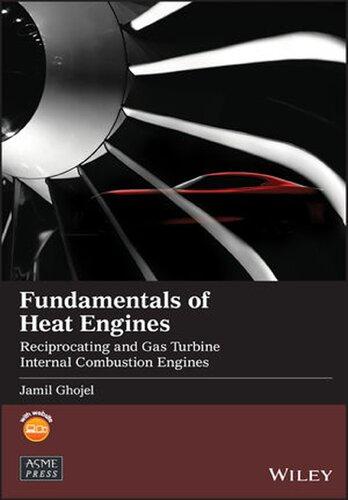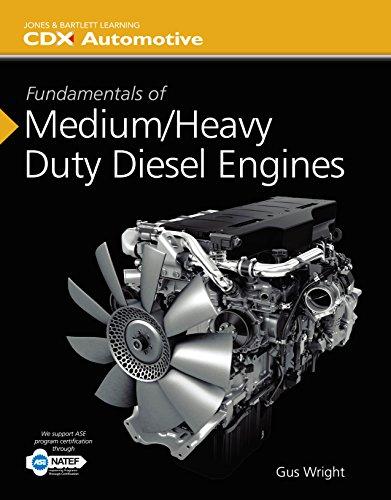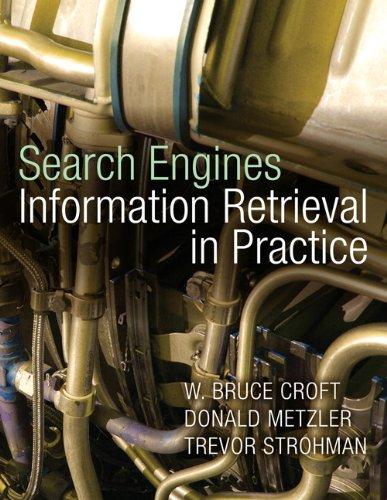FundamentalsofHeatEngines
JamilGhojel(PhD)
ThisWorkisaco-publicationbetweenJohnWiley&SonsLtdandASMEPress
Thiseditionfirstpublished2020 ©2020JohnWiley&SonsLtd
ThisWorkisaco-publicationbetweenJohnWiley&SonsLtdandASMEPress Allrightsreserved.Nopartofthispublicationmaybereproduced,storedinaretrievalsystem,or transmitted,inanyformorbyanymeans,electronic,mechanical,photocopying,recordingorotherwise, exceptaspermittedbylaw.Adviceonhowtoobtainpermissiontoreusematerialfromthistitleisavailable athttp://www.wiley.com/go/permissions.
TherightofJamilGhojeltobeidentifiedastheauthorofthisworkhasbeenassertedinaccordance withlaw.
RegisteredOffices
JohnWiley&Sons,Inc.,111RiverStreet,Hoboken,NJ07030,USA
JohnWiley&SonsLtd,TheAtrium,SouthernGate,Chichester,WestSussex,PO198SQ,UK
EditorialOffice
TheAtrium,SouthernGate,Chichester,WestSussex,PO198SQ,UK
Fordetailsofourglobaleditorialoffices,customerservices,andmoreinformationaboutWileyproducts visitusatwww.wiley.com.
Wileyalsopublishesitsbooksinavarietyofelectronicformatsandbyprint-on-demand.Somecontentthat appearsinstandardprintversionsofthisbookmaynotbeavailableinotherformats.
LimitofLiability/DisclaimerofWarranty
Inviewofongoingresearch,equipmentmodifications,changesingovernmentalregulations,andthe constantflowofinformationrelatingtotheuseofexperimentalreagents,equipment,anddevices,the readerisurgedtoreviewandevaluatetheinformationprovidedinthepackageinsertorinstructionsfor eachchemical,pieceofequipment,reagent,ordevicefor,amongotherthings,anychangesinthe instructionsorindicationofusageandforaddedwarningsandprecautions.Whilethepublisherand authorshaveusedtheirbesteffortsinpreparingthiswork,theymakenorepresentationsorwarrantieswith respecttotheaccuracyorcompletenessofthecontentsofthisworkandspecificallydisclaimallwarranties, includingwithoutlimitationanyimpliedwarrantiesofmerchantabilityorfitnessforaparticularpurpose. Nowarrantymaybecreatedorextendedbysalesrepresentatives,writtensalesmaterialsorpromotional statementsforthiswork.Thefactthatanorganization,website,orproductisreferredtointhisworkasa citationand/orpotentialsourceoffurtherinformationdoesnotmeanthatthepublisherandauthors endorsetheinformationorservicestheorganization,website,orproductmayprovideorrecommendations itmaymake.Thisworkissoldwiththeunderstandingthatthepublisherisnotengagedinrendering professionalservices.Theadviceandstrategiescontainedhereinmaynotbesuitableforyoursituation. Youshouldconsultwithaspecialistwhereappropriate.Further,readersshouldbeawarethatwebsites listedinthisworkmayhavechangedordisappearedbetweenwhenthisworkwaswrittenandwhenitis read.Neitherthepublishernorauthorsshallbeliableforanylossofprofitoranyothercommercial damages,includingbutnotlimitedtospecial,incidental,consequential,orotherdamages.
LibraryofCongressCataloging-in-PublicationData
Names:Ghojel,Jamil,author.
Title:Fundamentalsofheatengines:reciprocatingandgasturbineinternalcombustionengines/ JamilGhojel.
Description:Firstedition.|Hoboken,NJ,USA:JohnWiley&Sons,Inc., 2020.|Series:Wiley-ASMEpressseries|Includesbibliographical referencesandindex.
Identifiers:LCCN2019047568(print)|LCCN2019047569(ebook)|ISBN 9781119548768(hardback)|ISBN9781119548782(adobepdf)|ISBN 9781119548799(epub)
Subjects:LCSH:Heat-engines.
Classification:LCCTJ255.G452020(print)|LCCTJ255(ebook)|DDC 621.402/5–dc23
LCrecordavailableathttps://lccn.loc.gov/2019047568
LCebookrecordavailableathttps://lccn.loc.gov/2019047569
CoverDesign:Wiley
CoverImages:TurbineBlades©serts/GettyImages,Radsportscarsilhouette©Arand/GettyImages
Setin9.5/12.5ptSTIXTwoTextbySPiGlobal,Chennai,India PrintedandboundbyCPIGroup(UK)Ltd,Croydon,CR04YY 10987654321
Contents
SeriesPreface ix
Preface xi
Glossary xiii
AbouttheCompanionWebsite xvii
PartIFundamentalsofEngineeringScience 1
IntroductionI:RoleofEngineeringScience 2
1ReviewofBasicPrinciples 4
1.1EngineeringMechanics 4
1.2FluidMechanics 11
1.3Thermodynamics 19 Problems 39
2ThermodynamicsofReactiveMixtures 45
2.1Fuels 45
2.2Stoichiometry 45
2.3ChemicalReactions 47
2.4ThermodynamicPropertiesoftheCombustionProducts 56
2.5FirstLawAnalysisofReactingMixtures 59
2.6AdiabaticFlameTemperature 67
2.7EntropyChangeinReactingMixtures 73
2.8SecondLawAnalysisofReactingMixtures 74
2.9ChemicalandPhaseEquilibrium 75
2.10Multi-SpeciesEquilibriumCompositionofCombustionProducts 81 Problems 90
PartIIReciprocatingInternalCombustionEngines 95
IntroductionII:HistoryandClassificationofReciprocatingInternalCombustion Engines 96
3IdealCyclesforNatural-InductionReciprocatingEngines 99
3.1GeneralisedCycle 99
3.2Constant-VolumeCycle(OttoCycle) 104
3.3ConstantPressure(Diesel)Cycle 106
3.4DualCycle(Pressure-LimitedCycle) 108
3.5CycleComparison 114 Problems 116
4IdealCyclesforForced-InductionReciprocatingEngines 119
4.1TurbochargedCycles 119
4.2SuperchargedCycles 126
4.3ForcedInductionCycleswithIntercooling 129
4.4ComparisonofBoostedCycles 138 Problems 140
5Fuel-AirCyclesforReciprocatingEngines 143
5.1Fuel-AirCycleAssumptions 143
5.2CompressionProcess 144
5.3CombustionProcess 145
5.4ExpansionProcess 148
5.5MeanEffectivePressure 148
5.6CycleComparison 150 Problems 151
6PracticalCyclesforReciprocatingEngines 153
6.1Four-StrokeEngine 153
6.2Two-StrokeEngine 157
6.3PracticalCyclesforFour-StrokeEngines 160
6.4CycleComparison 172
6.5CyclesBasedonCombustionModelling(WiebeFunction) 173
6.6ExampleofWiebeFunctionApplication 182
6.7DoubleWiebeModels 184
6.8Computer-AidedEngineSimulation 186 Problems 188
7Work-TransferSysteminReciprocatingEngines 189
7.1KinematicsofthePiston-CrankMechanism 189
7.2DynamicsoftheReciprocatingMechanism 193
7.3Multi-CylinderEngines 206
7.4EngineBalancing 215 Problems 224
8ReciprocatingEnginePerformanceCharacteristics 228
8.1IndicatorDiagrams 228
8.2IndicatedParameters 231
8.3BrakeParameters 233
8.4EngineDesignPointandPerformance 235
8.5Off-DesignPerformance 239 Problems 247
PartIIIGasTurbineInternalCombustionEngines 251 IntroductionIII:HistoryandClassificationofGasTurbines 252
9Air-StandardGasTurbineCycles 254
9.1Joule-BraytonIdealCycle 254
9.2CyclewithHeatExchange(Regeneration) 258
9.3CyclewithReheat 260
9.4CyclewithIntercooling 263
9.5CyclewithHeatExchangeandReheat 265
9.6CyclewithHeatExchangeandIntercooling 267
9.7CyclewithHeatExchange,Reheat,andIntercooling 268
9.8CycleComparison 270 Problems 272
10IrreversibleAir-StandardGasTurbineCycles 274
10.1ComponentEfficiencies 275
10.2SimpleIrreversibleCycle 280
10.3IrreversibleCyclewithHeatExchange(RegenerativeIrreversibleCycle) 284
10.4IrreversibleCyclewithReheat 287
10.5IrreversibleCyclewithIntercooling 288
10.6IrreversibleCyclewithHeatExchangeandReheat 290
10.7IrreversibleCyclewithHeatExchangeandIntercooling 292
10.8IrreversibleCyclewithHeatExchange,Reheat,andIntercooling 294
10.9ComparisonofIrreversibleCycles 295 Problems 297
11PracticalGasTurbineCycles 299
11.1SimpleSingle-ShaftGasTurbine 299
11.2ThermodynamicPropertiesofAir 300
11.3CompressionProcessintheCompressor 301
11.4CombustionProcess 302
11.5ExpansionProcessintheTurbine 314 Problems 316
12Design-PointCalculationsofAviationGasTurbines 317
12.1PropertiesofAir 317
12.2SimpleTurbojetEngine 322
12.3PerformanceofTurbojetEngine–CaseStudy 328
12.4Two-SpoolUnmixed-FlowTurbofanEngine 337
12.5PerformanceofTwo-SpoolUnmixed-FlowTurbofanEngine–CaseStudy 350
12.6Two-SpoolMixed-FlowTurbofanEngine 357
12.7PerformanceofTwo-SpoolMixed-FlowTurbofanEngine–CaseStudy 369 Problems 373
13Design-PointCalculationsofIndustrialGasTurbines 376
13.1Single-ShaftGasTurbineEngine 376
13.2PerformanceofSingle-ShaftGasTurbineEngine–CaseStudy 379
13.3Two-ShaftGasTurbineEngine 387
13.4PerformanceofTwo-ShaftGasTurbineEngine–CaseStudy 390 Problems 394
14Work-TransferSysteminGasTurbines 398
14.1Axial-FlowCompressors 398
14.2Radial-FlowCompressors 404
14.3Axial-FlowTurbines 407
14.4Radial-FlowTurbines 422 Problems 427
15Off-DesignPerformanceofGasTurbines 429
15.1Component-MatchingMethod 429
15.2Thermo-Gas-DynamicMatchingMethod 446 Problems 464
Bibliography 466
AppendixAThermodynamicTables 469
AppendixBDynamicsoftheReciprocatingMechanism 485
AppendixCDesignPointCalculations–ReciprocatingEngines 492 C.1EngineProcesses 492
AppendixDEquationsfortheThermalEfficiencyandSpecificWorkofTheoreticalGas TurbineCycles 497 Nomenclature 498
Index 499
SeriesPreface
TheWiley-ASMEPressSeriesinMechanicalEngineeringbringstogethertwoestablished leadersinmechanicalengineeringpublishingtodeliverhigh-quality,peer-reviewedbooks coveringtopicsofcurrentinteresttoengineersandresearchersworldwide.
Theseriespublishesacrossthebreadthofmechanicalengineering,comprisingresearch, designanddevelopment,andmanufacturing.Itincludesmonographs,referencesand coursetexts.
ProspectivetopicsincludeemergingandadvancedtechnologiesinEngineeringDesign; Computer-AidedDesign;EnergyConversion&Resources;HeatTransfer;Manufacturing &Processing;Systems&Devices;RenewableEnergy;Robotics;andBiotechnology.
Preface
Thereciprocatingpistonengineandthegasturbineenginearetwoofthemostvitaland widelyusedinternalcombustionheatengineseverinvented.Pistonenginesarestilldominantintheareasoflandandmarinetransportation,mining,andagriculturalindustries. Theyalsoplayasignificantroleinlightaircraftandstand-bypower-generationapplications.Powerthatcanbegeneratedbypistonenginesrangesfromafractionofakilowattto morethan80 MW ,withthermalefficienciesapproaching50%.Gasturbinesaredominant incivilandmilitaryaviationandplayamajorroleinbase,midrange,andpeakloadelectric powergenerationrangingfromsmallstand-byunitsupto300 MW perenginewiththermal efficienciesapproaching40%attheupperrangeand500 MW incombinedcycleconfigurationswiththermalefficienciesapproaching60%.Gasturbinesarealsoidealaspowerplants operatinginconjunctionwithlargerenewablepowerplantstoeliminateintermittency. Demandforpowerandmobilityinitsdifferentformswillcontinuetoincreaseinthe twenty-firstcenturyashundredsofmillionsofpeopleinthedevelopingworldbecome moreaffluent,andthecheapestandmostefficientmeansofsatisfyingthisdemandwill continuetobetheheatengine.Asaconsequence,theheatenginewillmostlikelyremain anactiveareaofresearchanddevelopmentandengineeringeducationfortheforeseeable future.Traditionally,thepistonenginehasbeenanidealtoolforteachingmechanical engineering,asitfeaturesfundamentalprinciplesoftheengineeringsciencessuchas thermodynamics,engineeringmechanics,fluidmechanics,chemistry(morespecifically, thermochemistry),etc.Inthisbook,gasturbineenginetheory,whichisbasedonthesame engineeringprinciples,iscombinedwithpistonenginetheorytoformasinglecomprehensivetoolforteachingmechanical,aerospace,andautomotiveengineeringinentry-and advanced-levelundergraduatecoursesandentry-levelenergy-relatedpostgraduatecourses. Practicingengineersinindustrymayalsofindsomeofthematerialinthebookbeneficial. Thebookcomprises3parts,15chapters,and4appendices.ThefirstchapterinPartIis areviewofsomeprinciplesofengineeringscience,andthesecondchaptercoversawide rangeofthermochemistrytopics.Thecontributionofengineeringsciencetoheatengine theoryisfundamentalandismanifestedovertheentireenergy-conversionchain,asthis figureshows.
MechanicalWorkRotaryPower
ThermochemistryFluidMechanics
Thermodynamics
Thermochemistry
EngineeringMechanics
PartIIcoverstheoreticalaspectsofthereciprocatingpistonenginestartingwithsimple air-standardcycles,followedbytheoreticalcyclesofforcedinductionenginesandending withmorerealisticcyclesthatcanbeusedtopredictengineperformanceasafirstapproximation.PartIIIongasturbinesalsocoverscycleswithgraduallyincreasingcomplexity, endingwithrealisticenginedesign-pointandoff-designcalculationmethods.
Representativeproblemsaregivenattheendofeachchapter,andadetailedexample ofpiston-enginedesign-pointcalculationsisgiveninAppendixC.Also,casestudiesof design-pointcalculationsofgasturbineenginesareprovidedinChapters12and13.
Thebookcanbeadoptedformechanical,aerospace,andautomotiveengineering coursesatdifferentlevelsusingselectedmaterialfromdifferentchaptersatthediscretion ofinstructors.
JamilGhojel
Glossary
Symbols
A Area,air,Helmholtzfunction
a Acceleration,speedofsound,correlationcoefficient
B Bulkmodulus,correlationcoefficient,bypassratio
C Gasvelocity,molarspecificheat
c Massspecificheat,speedofsound
D Diameter,degreeofreactioninreactionturbines
E Totalenergy,utilizationfactorinreactionturbines,modulusofelasticity
F Force,thrust,fuel
f Specificthrust
G Gibbsfreeenergy
g Gravitationalacceleration
H Enthalpy,heatingvalueoffuel
h Specificenthalpy,bladeheight
I Momentofinertia
i Numberofcylinders
j Numberofstrokes
K DegreesKelvin,equilibriumconstant,force,moleratioofhydrogentocarbon monoxide
L Length
l Length,bladelength
M Quantityinmoles,Machnumber,momentofforce
m Mass
m Massflowrate
N Rotationalspeedinrevolutionperminute,force
n Polytropicindex(exponent),numberofmoles
p Pressure,cylindergaspressure
Q Heattransfer,force
q Specificheattransfer
Q Rateofheattransfer
R Radius,gasconstant,crankradius
R Universalgasconstant
xiv Glossary
r Pressureratio
S Entropy,stroke
s Specificentropy
T Absolutetemperature,torque,fundamentaldimensionoftime
t Time,temperature
U Internalenergy,bladespeed
u Specificinternalenergy
V Volume,velocity,relativevelocity
v Specificvolume,pistonspeed
W Work
W Power
w Specificwork,bladerowwidth,rateofheatrelease
x Distance,massfraction,numberofcarbonatomsinafuel,cumulativeheatrelease
x Linearvelocity
x Linearacceleration
yNumberofhydrogenatomsinafuel
zNumberofoxygenatomsinafuel,heightabovedatum
GreekSymbols
�� Angle,pressureratioinconstant-volumecombustion,angularacceleration
�� Angle,volumeratioinconstant-pressurecombustion
�� Ratioofspecificheats,V-angle(enginecrank)
Δ Symbolfordifference
�� Expansionratioinanenginecylinder
�� Compressionratio(volumeratio)
�� Heat-exchangereffectiveness
�� Efficiency
�� Angle,crankangle
�� Angularvelocity
�� Angularacceleration
�� Compressibility
�� Relativeair-fuelratio
�� Dynamicviscosity,coefficientofmolecularchange
�� Kinematicviscosity
Π Non-dimensionalgroup
�� Density,volumeratioduringheatrejectionatconstantvolume(generalized air-standardcycle)
�� Stress,rounding-offcoefficientinpistonenginecycles
�� Ratioofcrankradiustoconnectingrodlength
�� Flowcoefficient,crankangle(Wiebefunction),equivalenceratio
�� Angle(Wiebefunction),heatutilizationcoefficient
�� Loadingcoefficient,coefficientofmolarchange
�� Angularvelocity,degreeofcooling
Subscripts
a Air,actual,totalvolume
b Brake
C Carbonmassfractioninliquidorsolidfuel
c Compressor,clearance(volume),crank
com Compressor(volumeratio)
cp Crankpin
cr Critical
ct Compressorturbine
cw Crankweb
e exit
f Fuel,frictional,formation
g Gas,gravimetric
H Hydrogenmassfractioninliquidorsolidfuel
h Higher
i Inlet,intake,indicated,species,inertia
l Liquid,lower
m Mean
N Nitrogenmolefractioningaseousfuel
n Nozzle
O Massfractionofoxygeninliquidorsolidfuel
P Productofcombustion
p Piston,propulsive
pc Compressorpolytropicefficiency
pp Pistonpin
pt Turbinepolytropicefficiency,powerturbine
R Reactants(airplusfuel)
r Rod(connectingrod)
S Sulfurmassfractioninliquidorsolidfuel
s Isentropic,stoichiometric,swept(volume)
t Turbine,total(stagnation)condition
w Whirl(velocity)
Superscripts
g Gravimetric
0 Referencestate(pressure)
v Volumetric
Glossary
Abbreviations
A/FAir-fuelratio
AFTAdiabaticflametemperature
BDCBottomdeadcentre
caCrankangle
CICompressionignition
F/AFuel-airratio
bmepBrakemeaneffectivepressure
GTGasturbine
bsfcBrakespecificfuelconsumption
imepIndicatedmeaneffectivepressure
ICEInternalcombustionengine
isfcIndicatedspecificfuelconsumption
mepMeaneffectivepressure
NINatural-induction(engine)
ReReynoldsnumber
rpmRevolutionsperminute
SISparkignition
TDCTopdeadcentre
TETTurbineentrytemperature
ReviewofBasicPrinciples
1.1EngineeringMechanics
Mechanics dealswiththeresponseofbodiestotheactionofforcesingeneral,and dynamics isabranchofmechanicsthatstudiesbodiesinmotion.Theprinciplesofdynamicscan beused,forexample,tosolvepracticalproblemsinaerospace,mechanical,andautomotiveengineering.Theseprinciplesarebasictotheanalysisanddesignofland,sea,andair transportationvehiclesandmachineryofalltypes(pumps,compressors,andreciprocating andgas-turbineinternalcombustionengines).Areviewofsomeprinciplesrelevanttoheat enginesispresentedhere.
1.1.1Definitions
Particle.Aconceptualbodyofmatterthathasmassbutnegligiblesizeandshape.Anyfinite physicalbody(car,plane,rocket,ship,etc.)canberegardedasaparticleanditsmotion modelledbythemotionofitscentreofmass,providedthebodyisnotrotating.Themotion ofaparticlecanbefullydescribedbyitslocationatanyinstantintime.
Rigidbody.Anassemblyofalargenumberofparticlesthatremainataconstantdistance fromeachotheratalltimesirrespectiveoftheloadsapplied.Tofullydescribethemotion ofarigidbody,knowledgeofboththelocationandorientationofthebodyatanyinstantis required.Gasturbineshaftsarerigidbodiesthatarerotatingathighspeeds.Thereciprocatingpiston-crankmechanisminpistonenginesisacomplexsystemcomprisingrotating crankshaftandslidingpistonconnectedthrougharigidroddescribingcomplexirregular motion.
Kinematics.Studyofmotionwithoutreferencetotheforcescausingthemotionandallowingthedeterminationofdisplacement,velocity,andaccelerationofthebody.
Kinetics.Studyoftherelationshipbetweenmotionandtheforcescausingthemotion, basedonNewton’sthreelawsofmotion.
1.1.2Newton’sLawsofMotion
Accordingtothe firstlaw,themomentumofabodykeepsitmovinginastraightlineata constantspeedunlessaforceisappliedtochangeitsdirectionorspeed.
FundamentalsofHeatEngines:ReciprocatingandGasTurbineInternalCombustionEngines, FirstEdition.JamilGhojel. ©2020JohnWiley&SonsLtd.ThisWorkisaco-publicationbetweenJohnWiley&SonsLtdandASMEPress. Companionwebsite:www.wiley.com/go/JamilGhojel_FundamentalsofHeatEngines
Thesecondlaw definestheforcethatcanchangethemomentumofthebodyasavector quantitywhosemagnitudeistheproductofmassandacceleration:
Anotherformofthislawthatisparticularlypertinenttogasturbinepracticestatesthat forceisequaltotherateofchangeofmomentumormassflowrate m multipliedbyvelocity change dv (theletter v willbeusedforvelocityexclusivelyinthemechanicssectionofthis chapter):
Foranaircraftengine,theairflowintotheenginediffuserisequaltotheforwardflight speed v1 ,andengineexhaustgasesacceleratetovelocity v2 intheenginenozzle.Foramass flowrate m ofthegases,thethrustistherefore F = m(v2 v1 ) N .
Inheatengines,itisoftennecessarytousevectoralgebratoresolvetheactingforcesto determinetheforcesofinterestthatcanproducework.Forexample,thepressureforceof thecombustinggasesinthepistonengine,whichisthesourceofcyclework,doesnotact directlyonthecrank,asaresultofwhichparasiticforcesaregenerated,causingundesirable phenomenasuchaspistonslap.Resolvingtheforcesatthepistonpindeterminestheforce transmittedthroughtheconnectingrodtothecrank,generatingatorque.Inagasturbine, thegasforcegeneratedduringflowthroughthebladeshasacomponentactingparallelto theturbineaxisthatcausesbearingsoverloadandneedstobebalancedtopreventaxial displacementoftherotor.
The thirdlaw simplystatesthat‘foreveryforcethereisanequalandoppositereaction force’.Inanaircraftjetengine,thechangeinmomentumofalargeflowrateofgases betweentheinletandoutletoftheenginegeneratesabackwardforceknownas thrust, whichhasanequalreactionthatpropelstheaircraftforward.
1.1.3RectilinearWorkandEnergy
Aforce F doesworkonaparticlewhentheparticleundergoesdisplacementinthedirection oftheforce:
Work = Force × Displacement (in N m or Joule)
Iftheforceisvariableandmovingalongastraightline,
W1 2 = ∫ s2 s1 Fds
Newton’SecondLawforaparticlecanbewrittenas
F = ma = m ( dv dt ) ; hence, theequationfor W1 2 canbewrittenas W1 2 = ∫ s2 s1 m ( dv dt ) ds
Foranincrementalchangeindistance, ds = vdt;hence
F
Finally,
Theworkdonebyaforceisequaltothechangeinkineticenergy.Thisequationisthe simplestformoftheconservationofenergyequation.
1.1.4CircularMotion
Rotarymotionisthemostconvenientmeansfortransferringmechanicalpowerinalmost alldrivinganddrivenmachinery.Thisisparticularlysoinheatenginepracticewherethermalenergyisconvertedtomechanicalwork,whichisthentransferredviarotatingshaftto adrivenmachinery(electricalgenerator,propeller,wheelsofavehicle,pump,etc.).Considerthenon-uniformcircularmotionshowninFigure1.1,inwhichparticle P atangular position �� haslineartangentialvelocity v andangularvelocity ��.
Thecomponents x and y ofvelocity v (= ��r )inthe x and y directionsare:
Theaccelerationsinthesamedirectionsare
where
̈ x1 and ̈ x2 arethefirst-andsecond-orderaccelerationcomponentsinthe x direction (Figure1.1b,c).
̈ y = dy dt = r ( �� sin �� d�� dt + �� cos �� )
̈ y1 and ̈ y2 arethefirst-andsecond-orderaccelerationcomponentsinthe y direction.
Figure1.1 Non-uniformcircularmotioninCartesiancoordinates:(a)initialpositionandvelocity; (b)first-ordercomponentsofresultantacceleration;(c)second-ordercomponentsofresultant acceleration.
Thefirst-ordercomponentsoftheresultantaccelerationintheradialdirection towards0is
Since �� = v/r ,
Radialacceleration ar isdirectedoppositeto OP inFigure1.1b
Thesecond-ordercomponentsoftheresultantaccelerationinthetangentialdirectionis
Sincetheangularacceleration
Tangentialacceleration at isdirectedperpendicularto OP inFigure1.1c.
Theresultantaccelerationis
1.1.4.1UniformCircularMotionofaParticle
Intheuniformcircularmotion, r = const
Equations1.4a,1.7b,and1.8forvelocityandaccelerationbecome:
Theseequationsapplytoanypointontheoutersurfaceofamachineryshaftrotatingat constantangularvelocity,suchasreciprocatingandgasturbinesengines.
1.1.5RotatingRigid-BodyKinetics
Themotionofaparticlecanbefullydescribedbyitslocationatanyinstant.Forarigid body,ontheotherhand,knowledgeofboththelocationandorientationofthebodyatany instantisrequiredforfulldescriptionofitsmotion.
Themotionofthebodyaboutafixedaxiscanbedeterminedfromthemotionofaline inaplaneofmotionthatisperpendiculartotheaxisofrotation(Figure1.2).Theangular position,displacement,velocity,andaccelerationare,respectively, �� , d�� ,
Thetangentialandradialcomponentsoftheaccelerationat P andtheresultantaccelerationare,respectively,
Figure1.2 Rigid-bodyrotationalmotion.
ReferringtoFigure1.2,theforcerequiredtoacceleratemass dm at P is dF = at dm and themomentrequiredtoacceleratethesamemassis dM = rat dm. Theresultantmomentneededtoacceleratethetotalmassoftherotatingrigidbodyis
M = ∫ dM = ∫ rat dm = ∫ r 2 �� dm
Foraconstantangularacceleration, M = �� ∫ r 2 dm = I �� (1.11)
where I = ∫ r 2 dm isthemomentofinertiaofthewholemassoftherigidbodyrotating aboutanaxispassingthrough0.Equation(1.11)indicatesthatifthebodyhasrotational motionandisbeingacteduponbymoment M ,itsmomentofinertia I isameasureofthe resistanceofthebodytoangularacceleration �� .Inlinearmotion,themass m isameasure oftheresistanceofthebodytolinearacceleration a whenacteduponbyforce F . Inplanarkinetics,theaxischosenforanalysispassesthroughthecentreofmass G ofthe bodyandisalwaysperpendiculartotheplaneofmotion.Themomentofinertiaaboutthis axisis I G .Themomentofinertiaaboutanaxisthatisparalleltotheaxispassingthrough thecentreofmassisdeterminedusingtheparallelaxistheorem
I = IG + md2 (1.12) where d istheperpendiculardistancebetweentheparallelaxes. Forarigidbodyofcomplexshape,themomentofinertiacanbedefinedintermsofthe mass m andradiusofgyration k suchthat I = mk2 ,fromwhich k = √I ∕m.If I isinunitsof kg. m2 , k willbeinmetres.Theradiusofgyration k canberegardedasthedistancefromthe axistoapointintheplaneofmotionwherethetotalmassmustbeconcentratedtoproduce thesamemomentofinertiaasdoestheactualdistributedmassofthebody,i.e.
k = √ 1 m ∫ r 2 dm (1.13)
1.1.6Moment,Couple,andTorque
Themomentofforce F aboutapoint0istheproductoftheforceandtheperpendicular distance L ofitslineofactionfrom0(Figure1.3a):
Figure1.3 Definitionsofmoment,couple,andtorque.
A couple isapairofplanarforcesthatareequalinmagnitude,oppositeindirection,and paralleltoeachother(Figure1.3b).Sincetheresultantforceiszero,thecouplecanonly generaterotationalmotion.Themomentofthecoupleisgivenby
TorqueisalsoamomentandisgivenbyEq.(1.14),butisusedmainlytodescribea momenttendingtoturnortwistashaftofreciprocatingandgasturbineengines,motors, andotherrotatingmachinery.Inmachinerysuchasengines,force F willbeappliedtothe arm L atarightangle(�� = 0).Intheseapplications,thepowerisoftenexpressedinterms ofthetorque(seeEqs.1.21and1.22inSection1.1.9).
1.1.7AcceleratedandDeceleratedShafts
Considerashaftcarryingagasturbinerotororpistonengineflywheelwiththemoments andtorquesactingasshowninFigure1.4.Aheatengineisusuallystartedbymeansof anexternaldriversuchasstartingmotorbyacceleratingthedrivingshaftfromresttothe requiredspeed.Thedrivingtorquerequiredtoacceleratetheshaft T d isbalancedbythe inertiacouple M i = I�� (�� isangularacceleration)andresistancecouple M R ,whichismainly duetofrictioninthebearings,asshowninFigure1.4a.Thegoverningequationis
= Mi + Mr = I �� + Mr (1.16)
Figure1.4 Kineticsofrotatingshaft: (a)acceleratingshaft;(b)decelerating shaft.
Tostopanengine,abrakingtorque T b isapplied,whichisassistedbytheresistance moment M r todeceleratetheshaftfromtheratedspeedtorest,asshowninFigure1.4b
Thegoverningequationis
Theenginecanbebroughttorestwithoutapplyingabrakingtorquebycuttingoffthefuel supplyandallowingtheresistancecoupletodeceleratetheshafttorest.Notethatwhenthe shaftisdecelerating,theangularaccelerationvectoriscountertothedirectionofrotation oftheshaft.
1.1.8AngularMomentum(MomentofMomentum)
Theangularmomentumofbodyaboutanaxisisthemomentofitslinearmomentumabout theaxis.Figure1.5showsabodyrotatingwithangularvelocity �� aboutanaxispassing through0(perpendiculartotheplaneofthepage):
Linearmomentumofparticleofmass dm = dm ��l
Momentofmomentumofparticleabout0 = dm ��l2
Totalmomentum H 0 ofthebodyabout0forconstantangularvelocity
IfGisthecentreofgravityofthebody,
andtheangularmomentumofthebodycanbewrittenas
Theangularmomentumofarigidbodyaboutanyaxisremainsconstant,unlessanexternaltorqueaboutthesameaxisisapplied.Thisisknownasthe lawofconservationofangular momentum
1.1.9RotationalWork,Power,andKineticEnergy
Ifarigidbodyrotatesthroughincrementalangle d�� undertheactionofconstanttorque T , theincrementalrotationalworkwillbe
dW = Td��
Figure1.5 Angularmomentumofarigidbody.
Table1.1 Equationsofmotionforlinearand rotationalmotions.
LinearRotational s
Andtherotationalpoweris
Powerproducedbyheatenginesisalwaysrotational;hence,subscript r willbedropped henceforward.Iftheangularvelocityoftheengineshaftisexpressedintermsofrotational speed N inrevolutionsperminute(rpm),Eq.(1.21)canberewrittenas
TheSIunitofpoweristhe watt (W ),buttheoldunitof horsepower (HP)isstillwidely used,where1 HP ≡ 0.746 kW
Thekineticenergyofaparticleofmass dm (Figure1.5)is1/2dm(��l)2 ,andthetotalkinetic energy(KE)forthewholerigidbodyhavingaconstantangularvelocityis
MakinguseofEq.(1.19),wecanwrite
Table1.1summarisestheequationsofmotionofuniformlyacceleratingbodiesinlinear androtationalmotion.Thefollowingnotationisusedintheequations:
s, v,and a:lineardisplacement,velocity,andacceleration �� , ��,and �� :angulardisplacement,velocity,andacceleration. Subscripts i and f denote initial and final,respectively.
1.2FluidMechanics
Fluidmechanicsdealswiththebehaviourofafluid–liquid,gas,orvapour–inquiescent stateandinastateofmotion.Fluidsaresubstancesthatcannotpreserveashapeoftheir own.Inheatengineprocesses,thefluidsusedarepredominantlyingasformandinclude airatvariousdegreesofcompressionandproductsofcombustionatelevatedpressuresand temperatures.Understandingtheprinciplesoffluidmechanicswillhelpstudentstobetter handletheprocessesinthereciprocatingandgasturbineengines.
1.2.1FluidProperties
1.2.1.1MassandWeight
Mass isameasureofinertiaandquantityofthebodyofmatter(fluid), m (kg).
Weight istheforcewithwhichabodyofthefluidisattractedtowardstheearthbygravity:
w = mgN
Density istheamountofmassperunitvolume:
�� = m V kg∕m3
Specificweight istheweightofaunitvolumeofasubstance:
�� = w V = ��gN ∕m3
Specificgravity is
sg = ��f ��w @4∘ C = ��f ��w @4∘ C
wheresubscripts f and w arefor fluid and water, respectively.
��w @4∘ C = 9.81 kN ∕m3
��w @4∘ C = 1000 kg∕m3
1.2.1.2Pressure
Pressure istheforceexertedbyafluidonaunitareaofitssurroundings:
p = F A N ∕m2 or Pa
Pressureactsperpendiculartothewallsofthecontainersurroundingthefluid.Acolumn offluidofheight hm havingacrosssectionalareaof Am2 anddensity �� kg/m3 willexerta pressureof
p = hA��g A = h��g = �� hkPa
1.2.1.3Compressibility
Compressibility isthechangeinvolumeofasubstancewhensubjectedtoachangein pressureexertedonit.Theusualparameterusedtomeasurecompressibilityofliquidsis thebulkmodulusofelasticity E:
E = −Δp (ΔV )∕V N ∕m2
Thecompressibilityofagasatconstanttemperatureisdefinedas
�� =− 1 v ( ���� �� p )T
Foraperfectgas:
�� = 1 p m2 ∕N
1.2.1.4Viscosity
Generally,theshearingstress �� developedinamovingfluidbetweenastationarysurface andamovingfluidbodyisproportionaltothevelocitygradient Δv/Δy,andtheconstantof proportionalityisthedynamicviscosity �� :
Fluidssuchaswater,oil,gasoline,alcohol,kerosene,benzene,andglycerinebehave inaccordancewiththisequationandareknownas Newtonian fluids.Fluidsthatbehave otherwise(viscositychangeswithstress)areknownas non-Newtonian fluids.
Thepreviousequationcanberewrittenintermsoftheviscosityas
Theunitsof μ canbedevelopedasfollows:
Theratioofdynamicviscositytodensityofthefluidisthekinematicviscosity �� :
Viscosityofliquidsdecreaseswithincreasingtemperature,andthatofgasesincreases withincreasingtemperature.
1.2.2FluidFlow
Ifafluidbodywithcross-sectionalarea A isflowingatvelocity C,itsvolumetricflowrate Q isgivenby
ConsidernowtheflowofthisfluidthroughthecontrolvolumeshowninFigure1.6. Themassflowequationsatinlet1andexit2aregivenby
Thecontinuityequationorequationofconservationofmassforthisflowisobtainedby equatingthemassflowratesatsections1and2, m
,or
Thetotalenergy(inunitsof N m)foranelementoffluidofmass m atsections1and2 ofthecontrolvolumeshowninFigure1.6isgivenby
















